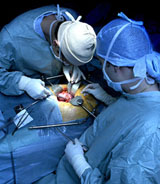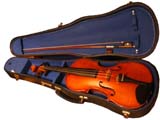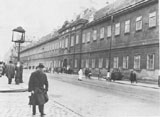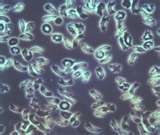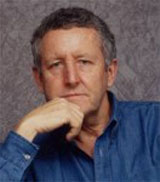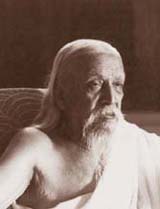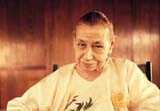The body
Memory transference in organ transplant recipients
Editor’s note:
There is a physical side and an occult side to everything. This article discusses both sides of the coin with regard to organ transplant and its effect upon the recipient’s personality.
There have been perplexing reports of organ transplant receivers claiming that they seem to have inherited the memory, experiences and emotions of their deceased donors, and which are causing quirky changes in their personality. We will present a few cases and then discuss a possible explanation in the light of the occult insights of Sri Aurobindo and the Mother, Mirra Alfassa.
Cases of personality changes due to organ transplants
Before we discuss the cases, it is pertinent to note that apart from miscellaneous information such as gender, age and cause of death, profiles of organ donors are traditionally concealed from their recipients for psychological reasons. The cases listed here came to light after mysterious behavioural symptoms of recipients compelled a breach in the traditional donor-recipient anonymity.
Dr Pearsall has collected the accounts of seventy-three heart transplant patients, and sixty-seven other organ transplant recipients and published them. These reports have been published in (2, 3, 4). We discuss a few cases here.
Case 1: Claire Sylvia develops desire for chicken nuggets and green peppers
On May 29, 1988, an American woman named Claire Sylvia received a heart transplant at a hospital in Yale, Connecticut. She was told that her donor was an eighteen year-old male from Maine, USA who had just died in a motorcycle accident. Soon after the operation, Sylvia declared that she felt like drinking beer, something she hadn't particularly been fond of. Later, she observed an uncontrollable urge to eat chicken nuggets and found herself drawn to visiting the popular chicken restaurant chain, KFC. She also began craving green peppers which she hadn’t particularly liked before. Sylvia also began having recurring dreams about a mystery man named Tim L., whom she felt was the organ donor. On a cue from someone, she searched for obituaries in newspapers published from Maine and was able to identify the young man whose heart she had received. His name had indeed been Tim. After visiting Tim’s family, she discovered that he used to love chicken nuggets, green peppers and beer. These experiences are documented in the book, A Change of Heart (1).
Case 2: a foundry worker develops a taste for classical music
A 47 year-old white male foundry worker, who received the heart of a 17 year-old black male student, discovered after the operation that he had developed a fascination for classical music. He reasoned that since his donor would have preferred ‘rap’ music, his newfound love for classical music could not possibly have anything to do with his new heart. As it turned out, the donor actually loved classical music, and died “hugging his violin case” on the way to his violin class (2).
Case 3: murder mystery involving donor is solved by an organ recipient
An eight year-old girl, who received the heart of a murdered ten year-old girl, began having recurring vivid nightmares about the murder. Her mother arranged a consultation with a psychiatrist who after several sessions concluded that she was witnessing actual physical incidents. They decided to call the police who used the detailed descriptions of the murder (the time, the weapon, the place, the clothes he wore, what the little girl he killed had said to him) given by the little girl to find and convict the man in question (2).
Case 4: the gender transplant
The donor was a 19 year-old woman killed in an automobile accident. The recipient was a 29 year-old woman diagnosed with cardiomyopathy secondary to endocarditis.
The donor’s mother reported:
“My Sara was the most loving girl. She owned and operated her own health food restaurant and scolded me constantly about not being a vegetarian. She was a great kid — wild, but great. She was into the free-love thing and had a different man in her life every few months. She was man-crazy when she was a little girl and it never stopped. She was able to write some notes to me when she was dying. She was so out of it, but she kept saying how she could feel the impact of the car hitting them. She said she could feel it going through her body.”
The recipient reported:
“You can tell people about this if you want to, but it will make you sound crazy. When I got my new heart, two things happened to me. First, almost every night, and still sometimes now, I actually feel the accident my donor had. I can feel the impact in my chest. It slams into me, but my doctor said everything looks fine. Also, I hate meat now. I can’t stand it. I was McDonald’s biggest money-maker, and now meat makes me throw up. Actually, whenever I smell it, my heart starts to race. But that’s not the big deal. My doctor said that’s just due to my medicines. I couldn’t tell him, but what really bothers me is that I’m engaged to be married now. He’s a great guy and we love each other. The sex is terrific. The problem is, I’m gay. At least, I thought I was. After my transplant, I’m not… I don’t think, anyway...I’m sort of semi- or confused gay. Women still seem attractive to me, but my boyfriend turns me on; women don’t. I have absolutely no desire to be with a woman. I think I got a gender transplant.”
The recipient’s brother reported:
“Susie’s straight now. I mean it seriously. She was gay and now her new heart made her straight. She threw out all her books and stuff about gay politics and never talks about it anymore. She was really militant about it before. She holds hands and cuddles with Steven just like my girlfriend does with me. She talks girl-talk with my girlfriend, where before she would be lecturing about the evils of sexist men. And my sister, the queen of the ‘Big Mac‘, hates meat. She won’t even have it in the house (3).
Case 5: a catering manager develops artistic talent.
This story comes from the British tabloid, The Daily Mail. William Sheridan, a retired catering manager with poor drawing skills, suddenly developed artistic talents after a heart transplant operation. He was amazed to discover that the man who donated his new heart had been a keen artist (5).
Case 6: the living heart transplant
Among the strangest case Paul Pearsall encountered was that of two men who shared the same heart.
Jim (original names withheld), who was dying of bad lungs, received a heart and lung transplant from a young woman who had just died. Since Jim’s old heart was still robust, it was transplanted into another man named Fred. After this domino transplant, Fred who was formerly laid-back began exhibiting the Type A aggressive behavior of Jim. During intimate moments, Fred would call his wife "Sandy", much to the consternation of his wife Karen. Jim’s wife’s name was Sandra. On the other hand, Jim became morose and sullen after the transplant and died a few years later. It was discovered that Jim’s donor had been a shy, soft-spoken young woman who had worked part-time in a flower shop, and had committed suicide in despair over a lost love (2).
Cases independently investigated in Europe
Dr. Benjamin Bunzel from the Department of Surgery at the University Hospital in Vienna has investigated the cases of forty-seven heart transplant recipients. He reports that 15 percent of his sample stated that their personality had changed due to what they felt was the life-threatening event of transplantation itself, but they did not attribute their experienced change to their donor. Six percent, or three patients, reported a distinct change of personality due to their new hearts. They added that they felt compelled to change their prior feelings and reactions to accommodate those they sensed as coming from the memories of their donor. Seventy-nine percent said that their personality had not changed in any way at all post-operatively. The patients who reported no-change employed defense mechanisms and exhibited angry and hostile reactions to questions about the possible receipt of the energy from their donor. They were often eager to change the subject and mocked the question itself (6).
General discussion
To put things in perspective, not all organ transplant recipients undergo personality changes. There were about 2,210 heart transplants in the USA in 2007 (7). According to a German specialist, Reiner Korfe, worldwide there are probably about 3,500 heart transplants performed every year (8).
Dr. Pearsall has observed that heart transplant recipients seemed to be the most susceptible to personality changes. Patients who had undergone organ transplants for kidney and liver also sensed changes in their sense of smell, food preference, and emotional factors, but these changes were usually transitory and could be associated with medications and other factors of transplantation. The findings for heart transplants appear more robust and more strongly associated with the donor’s history.
Given that not all heart transplant patients report personality changes, what might be the distinguishing characteristics of those who seem vulnerable? Pearsall identified about eighteen distinguishing traits amongst the people he interviewed whom he calls ‘cardio-sensitives’. All but two who reported memory transference were women. They had good emotional IQ, were environmentally sensitive, sensual, animal-loving, music-loving, creative types, more inclined to go with the flow rather than dominate. He notes that these traits were similar to the characteristics of easily hypnotized subjects and those who were successful energy-connecting operators and percipients in the PEAR (Princeton Engineering Anomalies Research) program.
Skeptical explanations
Skeptics might put forth one of the following explanations for this phenomenon:
● The heart is a vital organ and a new heart can breathe new power into the body to palpably change the personality.
● These changes are due to drug reaction caused by the immune-suppressants which are administered during organ transplants.
● Heart transplant patients are being subconsciously influenced by the information provided or overheard during their hospital stay. Incidentally, this has been dubbed the ‘hospital grapevine theory’.
These theories may explicate a few details in some cases but not Case 3, where the organ recipient’s dreams led to the conviction of the donor’s murderer.
Prevalent alternative explanations
Various theories have been proposed to explain this notion of ‘cellular memory’. This is a survey of a few prominent ones:
Little brain in the heart
In 1994, Dr Armour introduced the concept of a functional ‘heart brain (9).’ His analysis revealed that the heart has an intrinsic nervous system of its own, containing around 40,000 neurons called sensory neurites. The heart acts independently of the brain, sending and receiving meaningful messages of its own through the autonomic nervous system. It is possible that this newly discovered centre of intelligence is responsible for the memory transfer.
Neuropeptide theory
Pharmacologist Candace Pert proposed that neuropeptides which are stored in every cell act as a sort of biochemical correlate of emotion. It was previously thought that emotions resided in the limbic system in the brain. According to Pert, neuropeptides are protein-like messenger molecules released by the brain neurons which flow through the body communicating among the nervous, immune, endocrine, muscle, and skeletal systems via blood, interstitial fluids and the central nervous system, which are all body fluids. At present, about 100 different peptides are known to be released by various populations of neurons in the mammalian brain. Neuropeptides have also been found in the heart, which could explain some forms of cellular memories reported by heart transplant recipients (10).
Magnetic field theory
Cells in the heart have a unique magnetic property and respond to and interact with magnetic fields. There may be an as yet undiscovered electro-magnetic connection between the brain and heart expressed in a form of energy that contains some level of cellular memory.
Unprepared spirit theory
Psychic healers interviewed by Dr Pearsall speculated that these experiences were caused because the donor’s spirit was still attached to the earth and had not yet moved to its abode in the higher subtle worlds.
Psychometry theory
Some ‘psychics’ suggested that the heart of the donor is an ‘object’ that is imbued with the psychic energy of the donor much as a ring or other object can carry the energy of the owner. Biologist Lyall Watson suggested that physical items with which we are in intimate contact can indeed take on our emotional fingerprints and store our thoughts and feelings. If plants and inanimate objects can store our feelings and thoughts, it is possible that our body organs, which are most intimately connected to us, also contain our emotional imprints.
I have omitted a few other ‘non-local’ explanations which can be read in Dr Pearsall’s book (2).
The last two explanations — unprepared Spirit and psychometry theory — are aligned with some of the occult insights offered by Sri Aurobindo and the Mother on the nature of memory and the process of death.
Regarding the concept of ‘cellular memory’, Sri Aurobindo said memory permeates the consciousness since all Prāṇa is technically memory:
“Disciple : What is memory ? Is it a mental faculty?
Sri Aurobindo: Memory is everywhere. All that one is conscious of or not, is recorded in the “Prana”, the basic stuff of consciousness. But one remembers only that which one has attentively heard and fixed in his mind. But generally these impressions are received by the “Prana” and immediately they sink into the subconscious, or the subliminal consciousness, or whatever you like to call it…Even the soles of our feet have got a memory of their own…
…”we have divided the being into the mental, vital and physical. But when we speak of the mental, we take the mind working on its own plane, so to say. But all the parts are interconnected and the mind is working from above down right up to the lowest plane of consciousness and so it is with every principle (11).”
It was known in ancient India that food is imbued with the consciousness of the cook, which later became the basis for the discriminative orthodox practice of not eating food cooked by people of lower caste. Similarly, the Mother remarked that “in a greater or lesser proportion, you swallow along with the meat a little of the consciousness of the animal you eat (12).”
On a comparative note, the Renaissance physician, Paracelsus had noted the existence of ‘Mumia’, a vital essence which suffuses human parts.
“Mumia: the essence of life contained in some vehicle (vitality clinging to some material substance). Parts of the human, animal, or vegetable bodies, if separated from the organism, retain their vital power and their specific action for a while, as is proved by the transplantation of skin, by vaccination, poisoning by infection from corpses, dissection wounds, infection from ulcers, etc. (Bacteria are such vehicles of life.) Blood, excrements, etc., may contain vitality for a while after having been removed from the organism, and there may still exist some sympathy between such substances and the vitality of the organism; and by acting upon the former, the latter may be affected (13).”
But ‘cellular memory’ may not explain every thing, because not every organ seems to induce a memory transfer. As Pearsall observed, people who receive heart transplants seem to be the most susceptible to personality changes. Furthermore, the effects seem to be exacerbated after the death of the donor, as in Case 1 and Case 3 where the recipient began having dreams of the donor’s life. Given the fact that organ transplants are always done within hours after doctors have diagnosed outer signs of physical death, it is of relevance to note the Mother’s observation that there is a “spirit of the form” which persists in the body even after outer signs of death (14).
It is conceivable that it is the premature organ harvesting which is intensifying the memory transfer from the donor to the receiver. As the Mother expatiated on death and cremation:
“(People in India) are in too much of a hurry to burn the dead, sometimes they burn them alive!… They should wait for there’s a consciousness of the form, a life of the form assumed by the cells, which takes seven days to come out. And that is why sometimes the body makes abrupt movements when burned — people say it’s mechanical. It’s not mechanical, I know it’s not.
“So I don’t like this habit of burning people very much.
I think they do it here (apart from entirely sanitary considerations in the case of people who have died from nasty diseases), here in India, mainly because they are very afraid of all these little entities that come from desires, impulses — things which are dispersed in the air and which make ‘ghosts’ and all kinds of things. All desires, all attachments, all those things are like pieces that break off (each one goes its own way, you see), then these pieces gain strength in the surrounding atmosphere, and when they can fasten on to someone, they vampirize him. Then they keep on trying to satisfy their desires (15).”
Hence, it is conceivable that these fragments of the donor’s vital sheath, which are imbued with the living memories of impulses and desires, attach themselves to the heart and find a new home in the organ transplant recipient, thereby inducing the memory transfer.
In the process of writing this article, I discovered an article written by Michael Tymn (16) which deserves to be mentioned.
References
1. Sylvia, Claire. A Change of heart: a memoir. New York; Warner Books, 1997.
2. Pearsall, Paul. The Heart’s code: tapping the wisdom and power of our heart energy. New York; Broadway Books, 1999.
3. Pearsall, Paul, et al. “Organ transplants and cellular memories ” Nexus Magazine April/May 2005;12:3 <http://www.paulpearsall.com/info/press/3.html>.
4. Pearsall, Paul, et al. ”Changes in heart transplant recipients that parallel the personalities of their donors” Journal of Near-Death Studies Spring 2002; 20:3 <http://www.springerlink.com/content/k51335l4k 4676577>. (Accessed Jan 29, 2011).
5. “The Art Transplant” The Daily Mail March 31,2006. <http://www.dailymail.co.uk/health/article-381589/The-art-transplant.html>. (Accessed Jan 29, 2011).
6. Bunzel, B., et al. Does changing the heart mean changing personality? A retrospective inquiry on 47 heart transplant patients. Quality of Life Research 1992; Vol. 1: 251-6.
7. Fitzpatrick, Laura. “A Brief History of Heart Transplants” Time Magazine Nov. 16, 2009 < http://www.time.com/time/health/article/0,8599,1939493,00.html>.
8. <http://en.wikipedia.org/wiki/Heart_ transplantation>.
9. Armour, J.A., Ardell, J.L., eds. Neuro-cardiology. New York; Oxford University Press, 1994.
10. Pert, Candace. Molecules of Emotion: why you feel the way you feel. New York; Scribner, 1997.
11. Purani, A.B. (recorded by). Evening Talks with Sri Aurobindo, Third edition. Pondicherry; Sri Aurobindo Ashram Trust, 1982, p. 433.
12. The Mother. Collected Works of the Mother, Volume 6. Pondicherry; Sri Aurobindo Ashram Trust, 1979, p. 179.
13. Hartmann, Franz. Paracelsus Life and Teachings. New York; Rudolf Steiner Publications, 1973, p. 37.
14. The Mother. Collected Works of the Mother, Volume 5. Pondicherry; Sri Aurobindo Ashram Trust, 1979, p. 136.
15. The Mother. Mother’s Agenda, Volume 1. Paris; Institut de Recherches Evolutives, 1978, p. 376.
16. Tymn, Michael. “Are organ transplants metaphysically contraindicated?” Journal of Religion and Psychical Research July 2001; 24:3:153-61. <http://www.beyondtheveil.net/organs. html>.
Sandeep Joshi is a computer engineer currently living in the India. He writes an Integral Yoga blog athttp://www.auromere.wordpress.com
Share with us (Comments,contributions,opinions)
When reproducing this feature, please credit NAMAH,and give the byline. Please send us cuttings.
